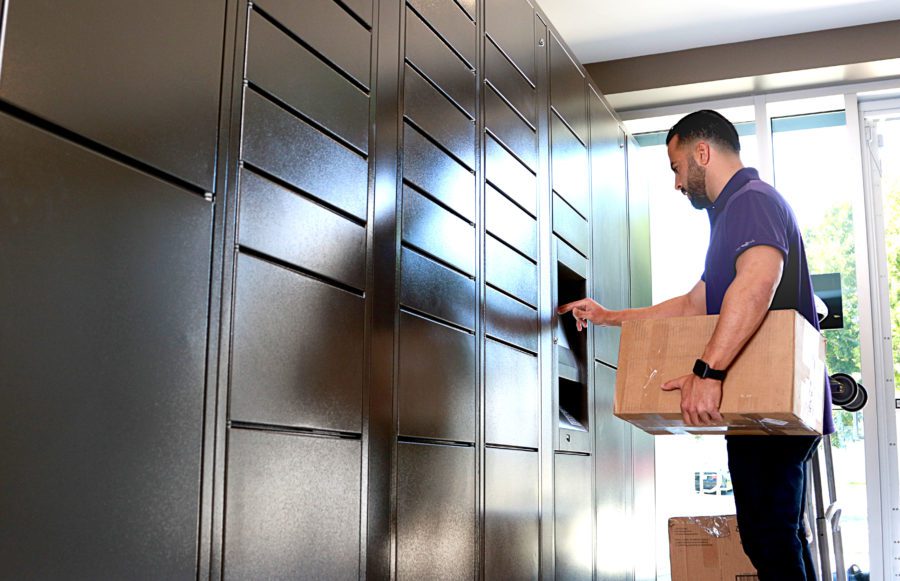
Our Blog
The Crucial Role of Accessibility in Higher Education
Written by: Parcel Pending
5 Min Read
Published: December 6, 2023
Updated: August 6, 2024
The COVID pandemic introduced or increased accessibility for thousands of students in higher education. Online learning, video-conferencing captioning, flexible deadlines, and on-demand lectures helped with accessibility but didn’t always provide a complete solution. Discussed below are initiatives that can help your institution equitably extend educational opportunities to all students.
Accessibility Defined
Accessibility in higher education is defined as allowing a person with a disability to acquire knowledge, engage in college interactions, and enjoy the same experience as people who do not have disabilities.
The Importance of Accessibility in Higher Education
Every student learns differently. Many higher education students benefit from digital accessibility tools and other accessibility solutions, as they make their experience better and easier for them. When learners (disabled students or otherwise) feel supported, they have a more positive relationship, which translates into higher retention and graduation rates. Additionally, engaged higher ed students attract new students and transfers, as well as reduce the chance of students transferring away from the school.
Improving Accessibility on Campus
New thinking on accessibility in higher education now includes neurodiverse students as well as those with physical disabilities. Neurodiversity includes dyslexia, dysgraphia, as well as ADHD (Attention-deficit/hyperactivity disorder) and other mental disorders. The latest research shows that ADHD affects 6.1 million children in the United States, and the diagnosis rate rose a whopping 42% between 2003 and 2011, with few children growing out of the condition before reaching college.1
Since neurodiverse students in higher ed often have trouble focusing, sitting still, or comprehending new words, special accommodations help. Encouraging movement, collaborative learning, using props, providing breaks, and using visual tools aid with understanding.
In the college classrooms and on campus, consider these student engagement strategies to make the learning experience more accessible:
- Offer Deadline and Scheduling Assistance – Breaking assignments into manageable chunks helps neurodiverse and traditional students successfully meet deadlines. Adding timelines to course outlines also helps.
- Include Multiple Modes of Delivery – Podcasts, video, text, Braille, and interactive digital access modules improve student accessibility as many students leverage assistive technology to engage with course materials.
- Provide Classrooms that Accommodate Mobility – Although students with mobility or dexterity challenges comprise only 1% of students with disabilities, they face distinct physical challenges in getting across campus, reaching their dorm rooms or other dorm amenities, using elevators to reach higher floors, and navigating weather issues.2 University campus improvement ideas to accommodate mobility include creating classrooms that follow universal design principles with wide aisles and adjustable desks, thereby making classroom spaces at higher education institutions work for various disabled students.
- Install ADA Compliant Smart Lockers – Parcel Pending by Quadient created the Campus Hub™ to act as a central distribution system for the transfer of enrollment documents, laptops, keys, parking passes, bookstore purchases or library books, move-in materials, and more – all facilitated using smart electronic lockers. Students with mobility issues often find that leaving and retrieving items from one central location such as parcel lockers results in fewer trips across campus.
Website Accessibility Features to Implement Online
According to a recent study, a full 97% of American higher education institutions’ websites do not meet the web content accessibility guidelines and requirements of the Americans with Disabilities Act.3 As the study’s sponsor and CEO, Lawrence Shaw, stated, we were “let down on their home page.” The Department of Education also intends to update its Section 504 rules to address web accessibility rules that Kathryn Branson, partner at Ulman Public Policy, notes “have not been updated since 1977.”4
Consider getting ahead of updates to web accessibility requirements by implementing these digital accessibility features in your institution’s online experiences:
- Implement Online Classes with Recordings and Captions – The ability to stop, start, and replay a college lecture is crucial to many students with disabilities. Of course, this also benefits other students who are sick or have time conflicts.
- Evaluate Digital Textbooks – Digital textbooks that can be rented or borrowed are typically cheaper and more accessible than standard textbooks. In a recent study, only 30% of two and four-year college respondents believed professors consider affordability when selecting course materials.5 As Lacey Wallace, a research analyst at the National Association of College Stores, explains: materials remain “a very visible expense [to students], because you’re pulling out your credit card. It’s not just thrown in your student loan.”
- Offer a Variety of Assignment Formats – To make education more accessible, offer assignments that can be delivered in various formats, including formats that can be accomplished by students using assistive technology for their coursework. For example, a video instead of an essay makes completing assessments more accessible for students with physical disabilities.
Additional solutions include investigating new ed-tech tools to ensure they are accessible. Moreover, vendors building websites for higher learning institutions should also be held accountable.
Adding these digital access modifications to higher education websites and digital content also assists in remaining compliant with web content accessibility guidelines and ADA requirements:
- Adding captions for video content
- Using sufficient color contrast between text and the background
- Including clear and organized headings
- Ensuring screen reader technology compatibility
- Providing descriptive text alternatives for meaningful images
- Ensuring the website can be navigated via the keyboard
- Providing transcripts or audio descriptions for video content
- Making it possible to resize the text without compromising website functionality
Accessibility in higher education is becoming a more significant issue as more students report mental health challenges, the growing incidence of neurodiverse conditions, and the physical challenges those with mobility issues continue to face. To stay ahead of these shifts and remain compliant, it’s critical to implement new protocols today.
Looking to further augment your institution’s accessibility initiatives and features? Speak to one of our package management experts today.
Sources:
- Winkler, Rolfe & Nassauer, Sarah. Walmart, CVS Pharmacies Have Blocked or Delayed Telehealth Adderall Prescriptions. www.wsj.com. April 27, 2022. https://www.wsj.com/articles/walmart-cvs-pharmacies-have-blocked-or-delayed-telehealth-adderall-prescriptions-11651082131
- Alexiou, Gus. Navigating The Hidden Traumas Of Starting College As A Wheelchair User. www.forbes.com. September 30, 2023. https://www.forbes.com/sites/gusalexiou/2023/09/30/fathoming-the-hidden-traumas-of-starting-college-as-a-wheelchair-user/
- Paykamian, Brandon. As Higher Ed Goes Digital, ADA Compliance Falls Behind. www.govtech.com. August 15, 2023. https://www.govtech.com/education/higher-ed/as-higher-ed-goes-digital-ada-compliance-falls-behind
- EdScoop. Education Dept. expected to announce web accessibility update soon. edscoop.com. June 20, 2023. https://edscoop.com/education-department-web-accessibility-update-soon/
- Flaherty, Colleen. Affordability, Accessibility Top Course Materials Concerns. www.insidehighered.com. April 28, 2023. https://www.insidehighered.com/news/student-success/academic-life/2023/04/28/affordability-accessibility-top-course-materials



